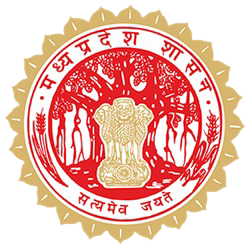Madhya Pradesh, in its present form, came into existence on November 1,2000 following its bifurcation to create a new state of Chhattisgarh.Reorganization of states led to the formation of state of M. P. on 1.11.1956 comprising of the erstwhile central province of Bhopal, Madhya Bharat & Vindhya Pradesh.
On the day of its birth the state had a complement of 252 Gazetted Officers and 39785 Non Gazetted Officers and men covering 739 Police Station. Six posts of DIG were created in the new state. The post of DIG of Police SAF & DIG of Police Admin.were added later in 1958 & 1959 respectively.23 new police stations were established mainly in the dacoit infested areas as part of a larger scheme to strike a decisive blow to organize and arrested dacoit gangs. Strength of the Distt. Executive Force & the SAF were augmented, keeping in view the law and order situation with the State.

To keep pace with the needs of a fast developing state, the Indian Police Service and State Service Cadre were suitably expanded. Existing Police Regulations were revised with a view to ensure uniformity of police working throughout the state. The administration of the Police throughout the General Police District invested in the IG of Police and his assistants at the PHQ. During these years, the M.P.Police force saw 12 Inspectors-General of Police and the up gradation of IG’s post to Director General of Police .The first IG of the new state was Shri B.G.Ghate, who was succeeded by Shri K. F. Rustamji in 1958.
Shri Rustamji had the distinction of leading the force for 7 years before he was chosen to create a new Central Force, the Border Security Force. It was during Shri Rustamji’s time that the Police Force achieved many milestones, including starting of Forensic Science Laboratory in 1964.
History of AJK (Anusuchit Janjati Kalyan)
Madhya Pradesh has a sizeable population of Scheduled Tribes and scheduled castes, who have remained cut off from the mainstream for centuries. Most of them lived in abject poverty under sub-human conditions, and were exploited by the society in general.
With the emergence of social-justice as a major concept in our democratic polity, old laws relating to the underprivileged classes were reviewed and more empowering social enactments were introduced by the parliament. At the same time, the role of police began to be conceived, not as mere enforcement machinery, but as the agents of social change.
Consequently, it was enjoined on police to play a more decisive role in the implementation of social laws. The Government of Madhya Pradesh, recognizing this change and realizing that normal police structure will not be sufficient to play the desired role, created specialized police set-up for this. Consequently, a separate Anusuchit Jati Janjati Kalyan Wing(AJK) was created in 1973, and special AJK police stations look into the complains of SC/ST persons and investigate cases registered on such complaints. The network of AJK police stations works under a separate ADG level officer and form a very important constituent of M.P.Police today.
Structural Changes and Modernization
With the growing use of scientific technology, professionalism and multifarious urban based problems, the police had to make corresponding organizational improvements, in training and make technological advancements in tune with the times.
The first step in this direction was enacting of Special Act armed force in 1968.This act has special provisions for better disciplinary control of armed personnel. To impart specialized training in field craft, to be able to deal with dacoits and Naxalites, the state police up graded its training centers and established Armed Police Training College at Indore in 1982, to cater to the needs of SAF personnel. Similarly the training college, established in 1906 at Sagar, was up graded as Police Academy later on, with a new perspective and academic flair to train the directly recruited Sub-Inspectors and Deputy Superintendents of Police.
Housing of police-men has been a problem with all police forces in the country and the M.P. police also faced this problem. Consequently, in 1981, a separate Police Housing Corporation was established by the state government for the construction of residential houses of policemen in far off areas where the PWD would not normally work. The corporation has constructed nearly 10,000 residential houses of policemen so far.
The western part of the state witnessed increased activities of smugglers in narcotics substances, Mandsaur being the largest opium producing district in the country. After the passing of Special Act to deal with narcotics substances, the state police created a separate Narcotics wing headed by an officer of ADG rank to deal with this problem in 1996.
Upkeep of crime records also needed to be computerized with the introduction of computer technology. As part of the countrywide programme of computerization of crime records, the state police established its computer wing in 1977 which was later converted into State Crime Record Bureau on the lines of NCRB.Subsequently all the districts were supplied with computers to bring their crime records on the computer system. Looking to the large size of the state, the state police set-up was re-organized in 1999 and officers of the rank of IG were posted to all ranges for better control and supervision of the work.
Numerous improvements were made in the communication, weaponry, riot control methods and traffic control, which need no elaboration. The state police is officer oriented in working and is rated very high in its performance amongst all the state police forces in the country today. Several of its armed battalions are deployed ex-state, since sixties permanently and are doing excellent work for the maintenance of law and order and counter-insurgency.
The state police is looking forward to enter the new millennium with a high head and history that would make any one feel proud.
Past Challenges
Dacoit Problem
The most important problem which the new State of Madhya Pradesh had to face was the growing menace of Dacoity in the northern districts of Chambal ravines and the north eastern districts of Chambal ravines and the north eastern districts of Bundelkhand.
The problem of dacoity in these areas was rooted in the history of it’s people, the nature of terrain and the primitive life of vendetta. When the new State of Madhya Pradesh came into being, these areas were swarming with formidable dacoit gangs.
As a result, the fabric of law and order in that area was steadily weakening. Under the stewardship of Shri Rustamji, a scheme was drawn up for strengthening the Police force and improving wireless network in that area. The implementation of the scheme, coupled with the grit shown by officers and men, paid rich dividends and leading dacoit gangs: namely Putly, the Bandit Queen Phoolan Devi, Amritlal, Roopa, Gabbar, Kalla and Lakhan Singh which were synonymous with terror passed into the bowels of history.
Similar success was achieved in Budelkhand area where dreaded gang of Moorat Singh and Chaliraja were liquidated.The good work done by the State Police was recognized and complimented by the president of India, Dr. Rajendra Prasad on the occasion of the ceremonial parade held at Gwalior to honor the Police Units taking part in these operations. The dacoity menace was not completely eradicated, but the backbone of the problem was broken and in about a decade time, the police was on the ascendancy. This demoralized the dacoit gangs completely and they were forced to seek an honorable surrender. In 1972, therefore with the efforts of the peace mission headed by Shri Jayprakash Narayan, nearly 550 dacoits surrendered, peace and prosperity returned to the area after centuries.
The dacoity problem, however, cropped up again in the eighties with the formation of the gangs of Malkhan Singh, Mohar Singh and Ramesh Sikarwar. The State Government had to enact a Special Law in 1981, the Madhya Pradesh Dakaity Prabhavit Kshektra Adhiniyam, with special powers to police. Armed with these special powers the police again moved into action and eliminated most of the notorious gangs in encounters. Later, Malkhan Singh, Ramesh Sikhawar and Phoolan Devi surrendered before the Chief Minister, Shri Arjun Singh and again peace was restored. The special law was repealed there after.
The dacoit problem has not been completely eradicated and a lasting solution lies largely in terms of socio-economic remedy. Today, the problem does exist, but within manageable limits.
Naxalite Activities
The State Police had hardly contained the dacoity menace, when in it’s southern-most Bastar area then a part of MP, the presence of naxalities of Peoples War Group started being noticed in the eighties.
The Naxalites infiltrated from across the adjoining areas of Andhra Pradesh. Initially, they used the forests of Bastar as a sanctuary for shelter, but gradually, after surveying the entire area, they started delivering “instant-justice” to tribal against their exploitation by some unscrupulous forest officials.
By the year 1990, they organized themselves for committing violent incidents and spread their tentacles into the forest covered regions right up to the middle of the state in Mandla district. Their activities assumed threatening postures affecting 3 ranges of the state, with as many as 18 ‘Dalams’ operating in M.P. Armed with sophisticated weapons, like AK-47 rifles and trained in remote control explosive devices, they ambushed police patrolling parties which has taken a toll of 98 policemen so far. There have also been sporadic instances of attack on isolated stations and looting of their armory.
The state government allocated substantial funds to meet this challenge under the anti-naxalite plan, which helped the state police improve their resources in the past 5 years. It was therefore, possible for taking counter measures which have accounted for 40 Naxalites being killed in 10 encounters and more than 50 Naxalites carrying rewards on their heads being arrested. The naxalite activities nevertheless, continue to be a major problem for the state police and a matter of concern for the state government however it has reduced in area as most of the naxalite affected area has gone to chhatishgarh on division of state.
Communal Disturbances
The state faced communal disturbances throughout its history in the post -Independence period. The districts of erstwhile Madhya Bharat and Bhopal States have remained particularly communally sensitive because of various factors and where there are pockets of large population of minority communities.
Few districts of the state have been identified as communally sensitive or hyper sensitive. Consequently, there have been instances of major communal riots in the state since 1956 onwards. These occurred at Bhopal(1959), Jabalpur(1961), Raigrah(1964), Indore(1964), Burhanpur(1971), Khargone(1974), Mhow(1980), Sendhwa(1984), Sehore(1986) and Bhopal and Ujjain(1992).The riots at the last two places occurred following the demolition of Ayodhya structure, which engulfed more than a dozen districts of the state, the worst affected being Bhopal. After that, however, the state is enjoying a period of relative communal harmony.
The state police has a very good track record in dealing with communal riots, not only for its impartiality of action but also due to the fact that in none of the judicial enquiries following communal riots, the police has been indicted for high handiness or impropriety. In 1984, the state government, issued an order to reward those police officers who did good work in prevention of communal riots, by way of two to four increments in pay




